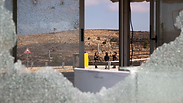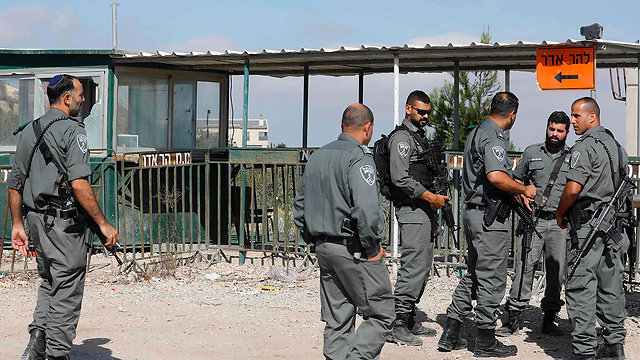

Har Adar attack: A painful but local incident
Analysis: Perpetrator of Tuesday’s attack doesn’t match profile of ‘classic’ terrorist or of lone-wolf terrorist inspired by terror organizations. He could have walked about Judea and Samaria and carried out attacks even without a work permit. Policy of distinguishing between terrorists and civil population has proven itself and must be maintained.
Military Intelligence chief Maj.-Gen. Herzl Halevy recently cautioned against an escalation in the Palestinian arena, stressing the humanitarian distress in the Gaza Strip. The existing warnings didn’t point to a possibility of an attack in Har Adar, which is why the IDF’s evaluation of the situation hasn’t changed: It was a painful but local incident.
With all our grief and the heavy price that has been claimed, this terror attack must be put in the right context, as it doesn’t necessarily correspond with the substantial changes taking place in the Palestinian arena. Even if it seems like a local event, which may generate copycat attacks, we must remember we have already seen similar incidents quite a few times in the past two years.
The perpetrator of the attack, Nimer Mahmoud Ahmed Jamal, doesn’t match the definitions of the “classic” terrorist or of a lone-wolf terrorist inspired by terror organizations. The fact he had a work permit made headlines on Tuesday, but it must be clarified he could have walked about Judea and Samaria and carried out attacks even without a work permit.

Furthermore, we must remember the expanded policy of granting work permits even at times of escalated violence, has proven itself in the current wave of terrorism, and only few people with work permits carried out attacks. The policy of distinguishing between terrorists and the civil population has also been deemed successful and helped reduce the number of terror attacks. Out of more than 450 attempted terror attacks, only two were carried out by Palestinians with work permits—one who had a regular permit and the other who had a temporary one.
This brings us to the operational angle: We must admit the Shin Bet and the Military Intelligence Directorate are actually incapable of identifying a potential terrorist like Jamal, a 37-year-old father of four who had no security-related background and decided to carry out an attack following a spat with his wife, who fled to Jordan. This terrorist didn’t leave any social media posts indicating he was planning to carry out an attack, like the post left by the Halamish terrorist, which Israeli intelligence nevertheless failed to detect. And even if he had written a post, we must understand it’s unrealistic to expect the Shin Bet and IDF to identify such intentions in advance—especially in a technological era in which the world’s intelligence organizations have trouble identifying ballistic missile launches.

On the other hand, we should be concerned about the operational conduct on the ground: The terrorist was able to fire 13 bullets, hitting four people and killing three of them. That’s a very bad outcome considering the fact it wasn’t citizens he was facing, but the security forces. This incident must be investigated and immediate conclusions must be drawn. For example, improving the structural shielding and making changes to the forces deployment in the crossing.
More broadly speaking, we must not ignore the defense establishment’s main strategic warning of possible escalation over the crisis in Gaza in the West Bank as well. This isn’t a new warning, but the previous warning regarding the possibility of renewed violence in Judea and Samaria has already been realized. In light of the fear of additional copycat attacks, and the fact we are in the middle of the High Holy Days, we must take it seriously even if what happened on Tuesday we a local incident.
The other thing we must remember is that the policy of distinguishing between terrorists and the civil population, which has been led by IDF Chief of Staff Gadi Eisenkot since the beginning of the wave of terror attacks two years ago, has proven itself. So as long as there is no clear change of direction, it should be maintained—precisely now, while the blood is still boiling.
















